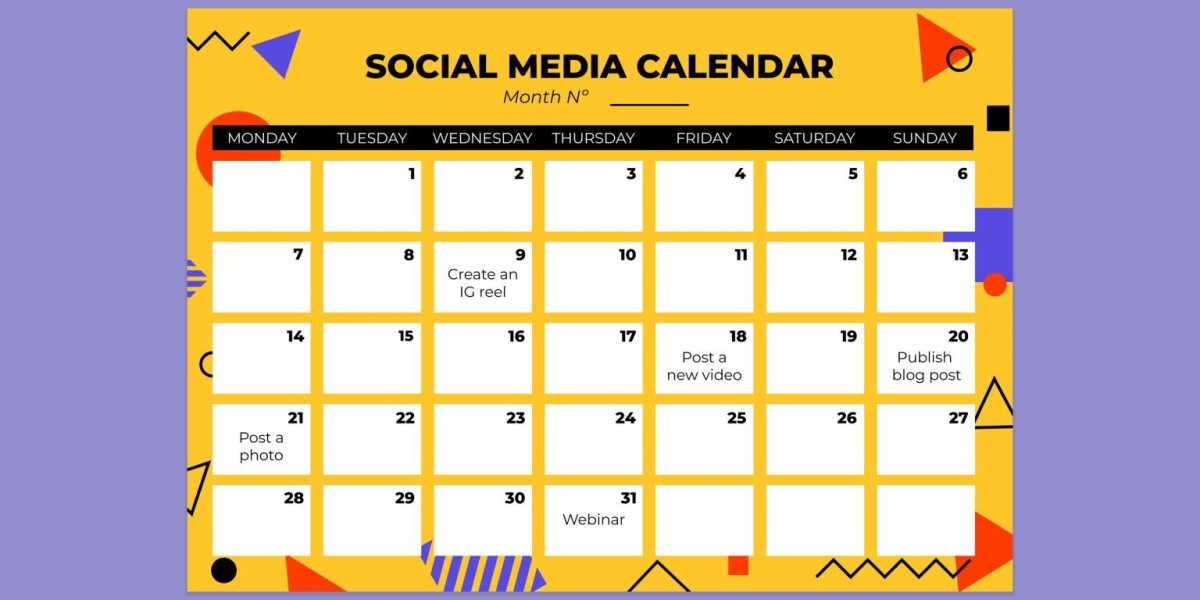In the fast-paced world of digital marketing, keeping up with your content across various platforms can be overwhelming. This is where a social media calendar comes into play. By organizing your posts and scheduling them in advance, you not only stay ahead but also maintain consistency, improve efficiency, and engage more effectively with your audience. Let’s dive into the steps to create a well-structured social media calendar and how it can benefit your business or personal brand.
What is a Social Media Calendar?
A social media calendar is a strategic tool that helps you plan and schedule your social media posts ahead of time. It provides an overview of your content, organized by date, platform, and type of post (whether it's an image, video, blog link, or another type of content). With a social media calendar, you can align your content with upcoming events, holidays, and campaigns, ensuring you are always posting relevant and timely updates.
Benefits of Using a Social Media Calendar
- Consistency: Posting regularly is key to keeping your audience engaged. A social media calendar helps maintain a steady flow of content, ensuring that you don’t miss any important dates or opportunities.
- Time Management: Instead of scrambling every day to create posts, a social media calendar allows you to batch-create content, saving time and reducing stress.
- Content Variety: Planning ahead lets you diversify your posts. A well-rounded social media calendar includes different types of content like images, articles, videos, and user-generated content, keeping your feed fresh and engaging.
- Better Analytics: When your posts are organized in a social media calendar, it becomes easier to track what works and what doesn’t. You can analyze the performance of each post and adjust your strategy accordingly.
- Team Collaboration: If you’re part of a team, a social media calendar provides clarity on who is responsible for what, making collaboration seamless and more efficient.
Steps to Create an Effective Social Media Calendar
- Define Your Goals
Before diving into creating a social media calendar, it’s important to set clear objectives. What do you want to achieve with your social media presence? It could be increasing brand awareness, driving website traffic, boosting engagement, or generating leads. Once you know your goals, you can tailor your content to meet those objectives. - Audit Your Social Media Accounts
Take a look at your current social media profiles and content. Analyze what type of content resonates best with your audience. Which platforms generate the most engagement? Conducting an audit helps you understand your strengths and identify areas for improvement, which will inform your social media calendar. - Choose Your Platforms
Not every social media platform may be suitable for your brand. Based on your audience and content type, choose the platforms where you’ll be most active. For example, Instagram might work best for visual content, while LinkedIn could be the go-to for B2B content. Your social media calendar should reflect these preferences. - Create Content Themes
One way to maintain consistency is by organizing your content into themes. These could be based on your industry, trending topics, or even specific campaigns. For instance, you could dedicate Mondays to motivational quotes, Wednesdays to product highlights, and Fridays to user-generated content. Themed content gives structure to your social media calendar and ensures you cover all relevant topics. - Determine Your Posting Frequency
Decide how often you want to post on each platform. It’s important to strike a balance—posting too little may cause your audience to forget about you, while overposting can overwhelm them. Find the sweet spot for each platform and note it in your social media calendar. - Schedule Posts in Advance
With your themes, content, and posting frequency determined, it’s time to start scheduling. Tools like Hootsuite, Buffer, or Later allow you to schedule posts ahead of time, making it easy to maintain consistency. Your social media calendar should cover at least a month in advance to give you ample time to adjust if necessary. - Incorporate Key Dates and Holidays
Integrate important dates such as holidays, company milestones, and industry events into your social media calendar. These occasions offer opportunities for timely, relevant posts that resonate with your audience. - Monitor and Adjust
Creating a social media calendar isn’t a set-it-and-forget-it task. Keep an eye on your analytics to see what’s working and what isn’t. Be flexible enough to adjust your calendar based on trends, audience engagement, or changes in your overall strategy.
Tips for Maximizing Your Social Media Calendar
- Stay Flexible: While planning is essential, don’t be afraid to adapt your calendar to accommodate real-time events, trending topics, or spontaneous ideas.
- Use Visual Aids: Many people find it helpful to color-code different types of content or platforms in their social media calendar for easy reference.
- Repurpose Content: Not every post has to be brand new. Repurpose high-performing content across multiple platforms or re-share evergreen content to get more mileage out of your efforts.
- Leverage Automation: Use scheduling tools to automate your posts, but still engage with your audience in real-time by responding to comments and messages.


